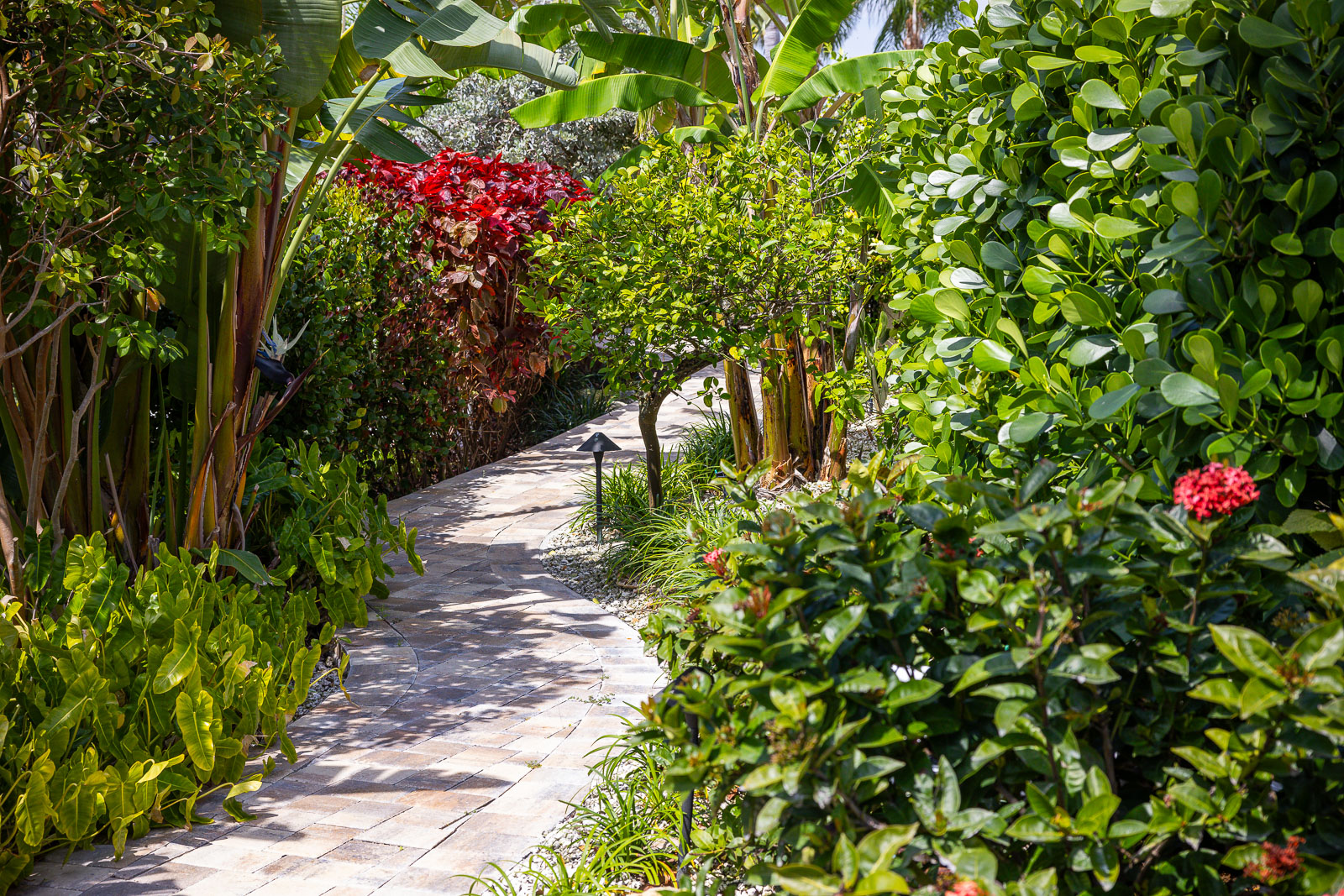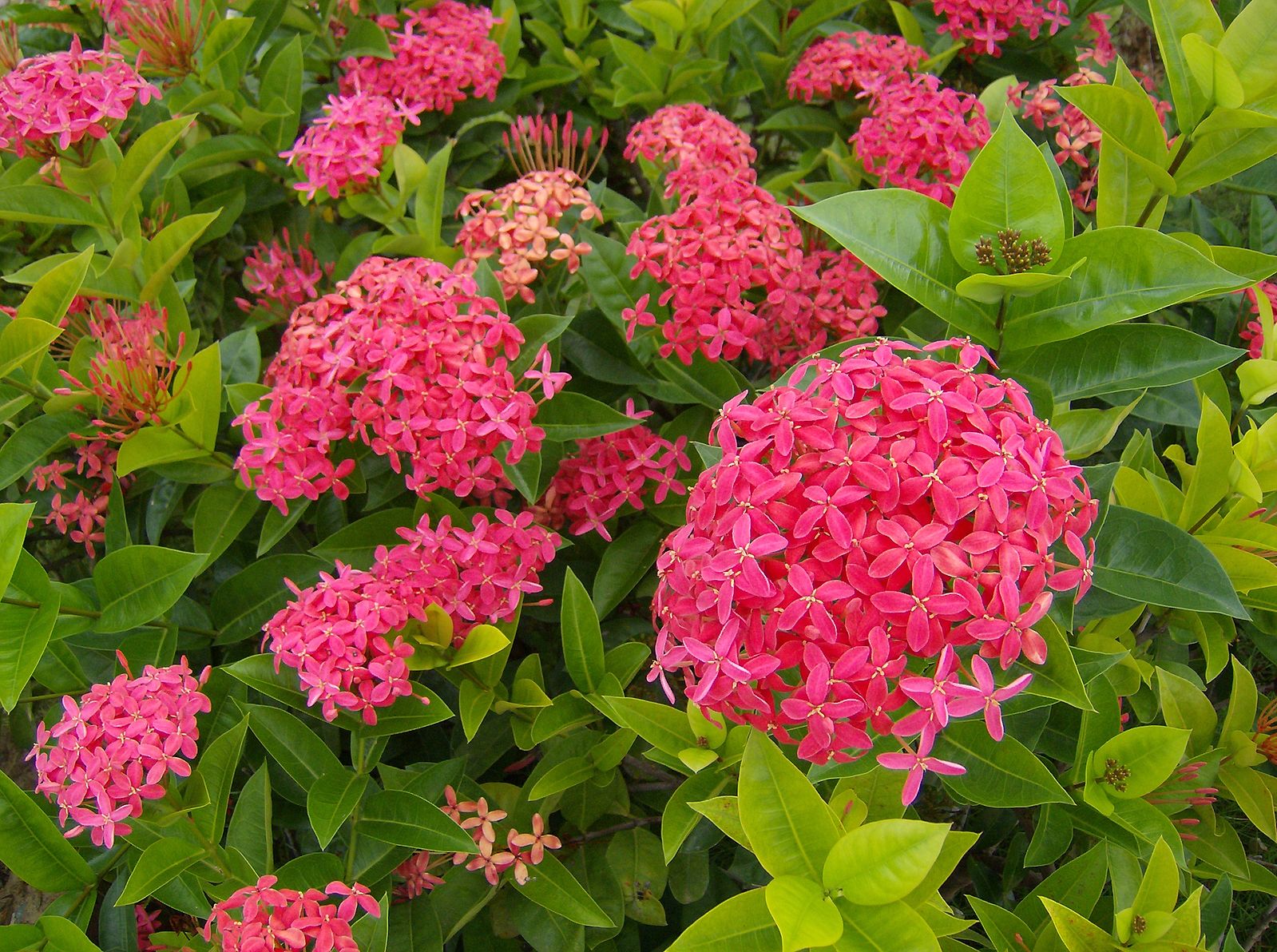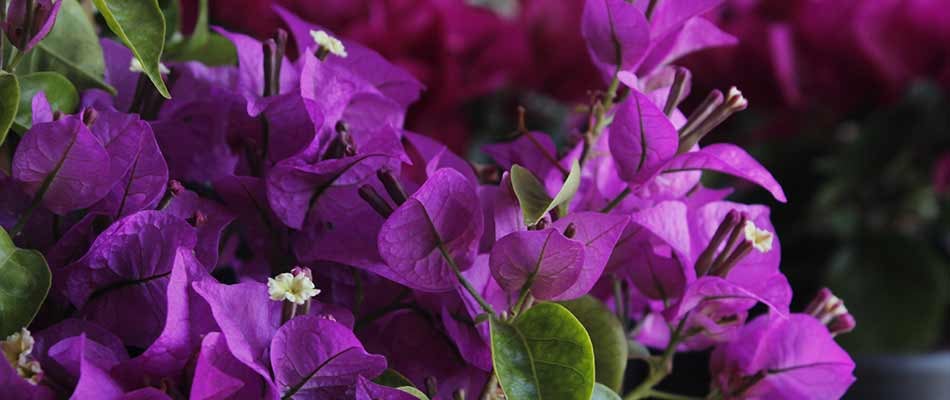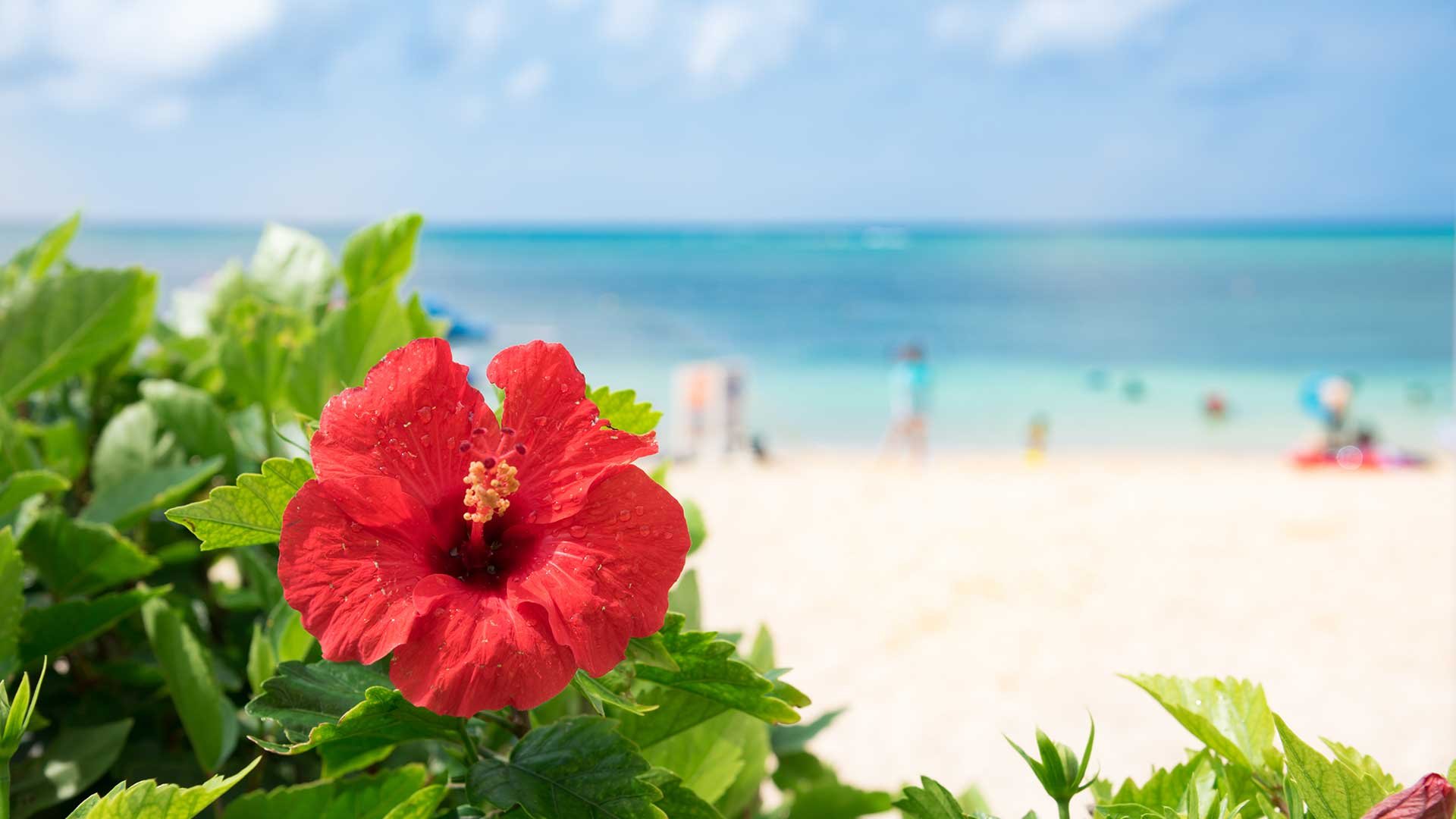
Pros and Cons of 7 Popular Tropical Plants for Florida Landscapes
Maybe the first time you realized there are pros and cons to everything, you were eating pizza, and bit into a piece of pineapple.
How could somebody take a perfect food like pizza and ruin it by adding pineapple?!!
Nothing's perfect, kid. Even your favorite tropical plant might have a downside.
What are the pros and cons of popular tropical plants for Florida? Some are stunning, but lose all their leaves in the winter. Or they’re poisonous to pets. Or they’ll poke you with sharp thorns.
Luckily, plant pros have workarounds for many plant problems.
Keep reading to learn more about both the benefits and challenges of popular tropical plants for Florida, including:
1. Plumeria
If you’ve ever been lucky enough to wear a fresh Hawaiian lei, you’ve been up close to pretty plumeria. The classic necklaces are made with these beautiful, five-petal tropical flowers.
Pros: Fragrant, stunning and colorful, plumeria will wow you from April through November with clusters of impressive blossoms and tropical paradise vibe. They’re tough, too, and can stand up to drought, heat and salt. When it comes to tropical plant benefits, plumeria delivers — most of the year.
Cons: Even though plumeria is a tropical plant, it’s deciduous, which means all its leaves fall off in winter.
People don’t love that — they think it died and cue the organ music.
Here at Tropical Gardens, we still use plumeria — it’s too pretty to boycott — but we creatively design around it so other plants grow up around it and disguise it during winter when it’s just a bunch of sad-looking sticks.
2. Azaleas
Everybody loves azaleas, among the popular tropical plants for Florida.
Pros: They’re absolutely stunning in bloom, with bright, colorful fragrant flowers. They support important pollinators, too, attracting bees and butterflies.
Cons: Sadly, azaleas are only in bloom for a week or two in February or March. And if an azalea isn’t pruned correctly, you won’t get any blooms at all. That’s just tragic. If an azalea gets pruned in summer, that pruning cuts off the buds that will turn into flowers.
Azaleas also top the list of plants hazardous for dogs. So if you’re a dog owner weighing the pros and cons of Florida tropical plants, be aware of this one.

3. Crotons
Crotons are Florida favorites, with show-stopping color and intriguing patterned leaves. It’s no wonder they’re among the most popular tropical plants for Florida.
Pros: They’re spectacular, and come in a dizzying array of varieties. You’ll see popular croton varieties like ‘Petra’ and ‘Mammy’ everywhere, but there are so many other great varieties if you want your landscaping to stand out in the neighborhood. ‘King of Siam’ has cool curly, twisty leaves. ‘Magnificent’ offers vibrant splashy color.
Cons: If the temperature dips into the lower 30s, a croton’s leaves
fall off. Don’t worry — it’s not dead. It’s just naked. Those amazing leaves will grow back in the spring. By March you should see signs they’re bouncing back, and those fantastic yellow, orange and red leaves will be back by April.
Sensitivity to cold is one of the disadvantages of tropical plants in Florida. Luckily, it doesn’t dip into the 30s very often around here.
You can help protect your shivering croton by covering it up if the forecast calls for frosty temps. Grab a blanket, a sheet, cardboard or newspaper. Secure it at the bottom with rocks or bricks so it doesn’t blow off. Don’t forget to remove the covering in the morning once the sun comes up.
Another croton con: scale love it. Scale are sap-eating insects named for the scale or shell-like waxy covering that covers their bodies.

4. Ixora ‘Nora Grant’
This lovely shrub is a favorite around here, known for its vibrant flowers and glossy green leaves.
Pros: Ixora flowers throughout the year, offering clusters of tubular flowers in bright red, orange, yellow, pink, or white that last between six and eight weeks, giving your landscape long-lasting color. It’s versatile, too, great as a hedge, border, screen, or specimen plant.
Cons: It often gets red spots in the winter, which plant experts used to assume was a fungus. We’ve since figured out the red spots are actually a magnesium deficiency. In the winter, this Ixora doesn’t absorb nutrients as efficiently as it should.
Solution: we add magnesium to our plant care package in the fall. Problem solved — as long as you have plant pros on the job who know to do this.

5. Bougainvillea
A tropical favorite that’s fun to say, this vine-like shrub comes in a kaleidoscope of colors — pink, red, orange, yellow, white, or purple, making it among the most popular tropical plants for Florida.
Pros: This shrub not only blooms in a spectacular show all year but is also drought tolerant. And the more sun your bougainvillea gets, the more blooms it will produce.
Cons: Bougainvillea has thorns, which makes some homeowners steer clear. But this isn’t terrible. The thorns are actually soft and pliable on new growth. So if you trim your bougainvillea often, the thorns will always be soft.
Another solution: hire a landscaping company to do your maintenance. Then they’ll deal with the thorns, so who cares?

6. Hibiscus
Just the thought of hibiscus is enough to make you happy. Those flowers!
Pros: Hibiscus flowers can be up to nearly 10 inches in diameter at maturity and come in a wide range of colors, from white to red, pink, yellow, and orange. They’re stunning — the ultimate tropical paradise flower and among the most popular tropical plants for Florida.
Bonus: hibiscus gifts us with nearly year-round flowers, as long as they get the right nutrients.
Cons: the wrong pruning can ruin everything. Persnickety pruning needs are one of the disadvantages of tropical plants in Florida.
Some homeowners and landscape maintenance companies trim hibiscus shrubs every month. That’s a huge mistake. It cuts off the new buds.
Tropical Gardens Landscape crews trim hibiscus a foot from the ground in spring and a foot from the ground in fall. That’s it.
Then, say hello to bountiful blooms.
On the other hand, if you don’t prune hibiscus at all, it will start to look weird. All the new growth will grow at the top and will shade the bottom. Then the bottom won’t get the sunlight it needs for photosynthesis and healthy growth.
Ever see a hibiscus with leaves only in the top 8-10 inches? Somebody forgot to prune it.
Proper pruning is super important for this tropical favorite.

7. Royal Palm
This big beauty is a sought-after landscape palm for elegant South Florida homes.
Pros: It’s a classic palm tree, with a smooth gray trunk, bright green crown and long, luxurious, full fronds. It soars to a spectacular 80 feet tall.
Cons: A mature Royal Palm has a 10 foot by 10 foot root ball. It’s massive. So don’t plan to install one of these towering trees too close to your driveway. It will actually push your driveway pavers up off the ground or crack and heave the concrete. Make sure you have room.
A Royal Palm can also have a 2.5 foot diameter trunk, which can overpower a smaller property.

Disadvantages of Tropical Plants in Florida? High Maintenance
Everybody says they want low maintenance landscaping, but if you live in Southern Florida, that’s not a thing. Better move to Siberia.
The fact is, most tropical plants are high maintenance. We have a 12-month growing season here, so plants always need something — especially if they flower.
Hungry plants need fertilizer to thrive. Things grow fast, so trimming and pruning are crucial. Bugs are always on the attack.
If you’re new to Florida, your $700 landscape maintenance bill will likely take you by surprise. Holy plumeria! Is that for one month?
Landscaping crews are working hard out there, year round, to keep plants healthy and thriving.

Challenges with Tropical Plants in Florida? Talk to Us
Sure, some of the best tropical plants have a downside or two. But it’s not the worst problem.That would be pineapple on your pizza.
A good full-service landscape maintenance program can help.
Tropical Gardens puts pros on your property who know exactly when to prune each plant and who visit your plants each week, closely monitoring your tropical plants for everything from water and fertilizer needs to early signs of plant pests like scale. We’ll show up at the right times with the right care to keep your tropical plants healthy and thriving year-round.
Partner with landscape services in Sarasota FL that know how to solve all the challenges of tropical plants in Florida.
We can’t wait to get started.
Give us a call or fill out our form today! Our team of Sarasota landscape experts can’t wait to help you out with all your plant care needs.



